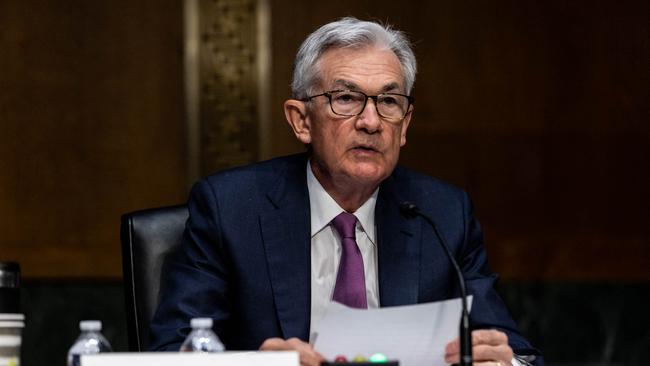Monetary policy excesses point to ‘boom-bust’ scenario
Head of Australian equities at fund manager T. Rowe Price, Randal Jenneke, is warning clients of a ‘boom-bust’ scenario affecting the sharemarket amid a monetary ‘unwind'.

Head of Australian equities at T. Rowe Price, Randal Jenneke, is warning clients of a “boom-bust” scenario affecting the sharemarket amid an “unwind of monetary and fiscal policy excesses”.
As economists revised up their growth forecasts before Wednesday’s release of national accounts data for the December quarter, the top Australian stock picker at one of the world’s biggest active fund managers also warned of “the real risk of a policy error” by the US Federal Reserve if it “hikes too aggressively” into an emerging economic downturn.
T. Rowe Price is one of the world’s biggest purely active fund managers with $US1.58 trillion ($2.19 trillion) of assets under management.
While quarterly GDP is expected to match the 3.4 per cent quarter-on-quarter rebound in the September quarter of 2020 – the fastest pace of growth since 1976 – Jenneke says most leading indicators already point to an economic downturn both in Australia and in the US.
“In effect, significant stimulus recreated the traditional boom-bust economic cycle,” Jenneke says. “We have witnessed the boom, next it will be followed by the bust.
“We want to be underweight value and overweight growth stocks when this happens.”
Consistent with that view, he doubts that long-term bond yields will rise much further in this economic cycle. After surging from a record low near 31 basis points in March 2020 to a 2.5-year high near 2.06 per cent this month amid surging US inflation and expectations of tighter monetary policy, the benchmark 10-year US Treasury bond yield hit a four-week low near 1.81 per cent.
Bond prices have been supported by safe haven buying since Russia began to invade Ukraine last week and harsh financial sanctions on Russia – including cutting some of its banks off from the global financial messaging system and moving to freeze about $US640bn ($884bn) of foreign reserves owned by the central bank of Russia – were announced over the weekend.
But after falling sharply in recent weeks, shares haven’t seen much additional weakness since the invasion of Ukraine. The US market was higher than it was before the invasion started, partly due to expectations that central banks will hike less than they would otherwise have done.
Congressional testimony from Fed chair Jay Powell on Tuesday and Wednesday will be key.
But Jenneke says central banks are now simply following market expectations with many, particularly the Fed, “well behind the curve on fighting inflation.”
He argues that in this environment investors should favour growth stocks, because when the outlook is weak, growth is scarce and growth stocks tend to be more highly valued.
But “excess policy measures” have “bred some valuation excesses”.
He notes that the PE valuation gap between the top 20 per cent of S&P/ASX 200 company valuations and the next 20 per cent is coming off the highest levels since the tech bubble of the late 1990s.
“With the handbrake being squeezed on excess stimulus, it is not surprising to see excess valuations correct,” he says.
“These areas of excess will likely be those that take the longest to recover, just as they did during the tech wreck.”
A “falling tide of excess stimulus” has also hurt a lot of the more modest growth or “growth at a reasonable price” companies that still represent quality businesses.
“In turn, the recent sell-off has also presented good opportunities to take advantage of, rather than de-risk and reduce exposure entirely,” Jenneke says.
“During periods where value has outperformed, these GARP names have beaten their more expensive counterparts.”
But in an era of excesses being unwound and some mean reversion, “we prefer not to be too far out the risk spectrum,” he cautions. “We believe that by spreading our risk between areas of attractive growth and quality names, based on fundamentals, we can potentially deliver the most consistent outcome.”




To join the conversation, please log in. Don't have an account? Register
Join the conversation, you are commenting as Logout